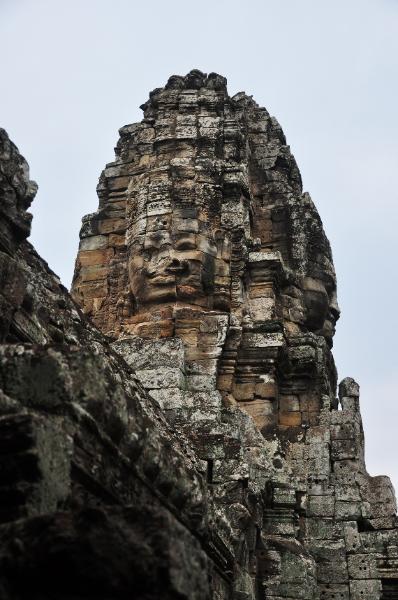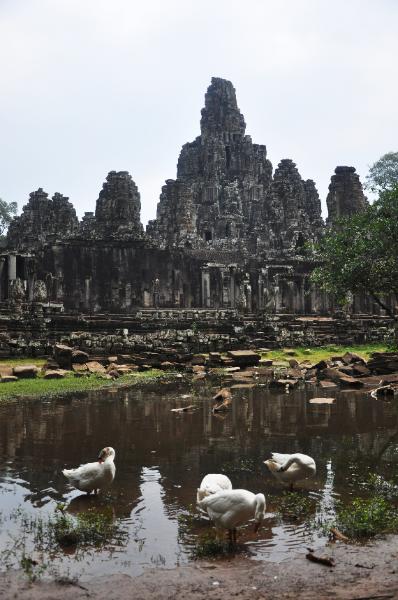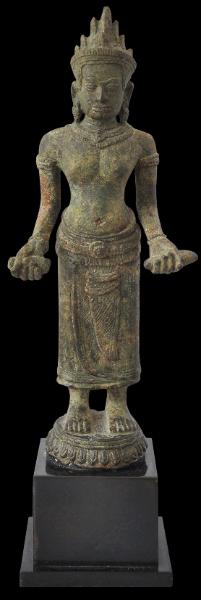
Prajnaparamita, Cambodian Bronze (Bayon)
Bronze Image of Prajna Paramita
Bayon Style, Angkor Period, Cambodia
circa 12th-13th century
height: 19cm (and with stand: 23.6cm); weight: 471g
This unusually well-cast and detailed image of Prajna Paramita, the Buddhist goddess of transcendent wisdom and one of the most important figures in Mahayana Buddhism, shows the goddess with a long shirt or sampot with fishtail pleating in front secured by an elaborate belt. Her unusual, tall chignon is arranged as a stepped, foliate, multi-pointed crown, evocative perhaps of Mount Meru, the mythical abode of the gods.
The face has been cast with typically Bayon features: a unified, curved brow line; slanted eyes; and generous, full lips. She expresses the supreme bliss that comes from the attainment of perfect wisdom. Her sublime expression helps to convey a sense of mystic divinity.
She wears several necklaces, bracelets, upper arm ornaments and long, elaborate earrings. Such extravagant jewellery and elaborate dress also is typical of the Bayon style. She holds a book in the finely and distinctly rendered fingers of one hand, and a lotus bud in the other, and stands on a round platform, beautifully cast with lotus petals.
The finely-cast face accords with the personality cult that developed during the reign of Jayavarman VII in the late twelfth century when real individuals began to be depicted as Buddhist deities, breaking all the norms of Buddhist iconongraphy.
The sacking of Angkor in 1177 lead to such iconographical innovations under Jayavarman VII. The new ruler was a practicing Buddhist and for the first time in Khmer history, Buddhism became the state religion. There was a movement too towards a more potent theology that incorporated esoteric Buddhist and Tantric elements and cosmic symbolism designed to protect the empire in the art and architecture of the period. An ambitious building program was commenced and the Preah Khan, Angkor Thom and Bayon temple complexes were constructed. Large quantities of statues in stone and bronze were produced to decorate the new public buildings. (Many were despoiled by Jayavarman VII’s Shivaite successor Jayavarman VIII.)
An image of the Buddha, seated and sheltered by naga hoods, the most popular type of Buddha image during this period, was located in the central shrine of the Bayon Temple. The other important images of this period were Lokesvara (Lord of the World and also known as Avalokiteshvara), a form of Bodhisattva, Occasionally, the trio was shown incorporated into the one image group. It is possible that this image was part of one such image group. (See Ibbitson Jessup, 2006, p. 9, for one such related image group that is in the National Museum of Cambodia’s collection.)
This image has a mottled silvery-green patina all over with brown coppery undertones. That the green and brown copper hues should be so apparent in images from this period is not surprising. Energy-dispersive x-ray fluorescence analysis on a series of sculptures contemporary with the example here has shown that the copper proportion for the tested group ranged from 77% to 85%. The tin content ranged from 2% to 15%, the lead content 3% to 13% and one image with a low tin result showed a presence of zinc at 9% (Cort & Jett, 2010, p. 83.)
Overall, this image is a particularly fine example. It has a strong three-dimensional quality; fluid, distinct contours; and an unarguable patina.
The image stands on an elegant, custom-made, metallic plinth, which sets off the image to its full potential.
References
Albanese, M., Angkor: Splendors of the Khmer Civilisation, White Star, 2006.
Brand, M., & C. Phoeurn,
The Age of Angkor: Treasures from the National Museum of Cambodia, Australian National Gallery,1992.
Bunker E.C. & D. Latchford,
Adoration and Glory: The Golden Age of Khmer Art, Art Media Resources, 2004.
Coe, M.,
Angkor and the Khmer Civilization, Thames & Hudson, 2004.
Cort, L.A. & P. Jett,
Gods of Angkor, Bronzes from the National Museum of Cambodia, Smithsonian Institution, 2010.
Ibbitson Jessup, H.,
Masterpieces of the National Museum of Cambodia, Friends of Khmer Culture, 2006.
Rooney, D.,
Angkor: Cambodia’s Wondrous Khmer Temples, Odyssey, 2011.
Roveda, V.,
Sacred Angkor: The Carved Reliefs of Angkor Wat, River Books, 2003.
Provenance
UK private collection – late 1980s until recently.
acquired from the Royal-Athena Galleries, New York, in the late 1980s.
lot 81, Sotheby’s London, ‘Khmer, Thai, Indian and Himalayan Works of Art’, June 10-11, 1985.
Inventory no.: 1815
SOLD

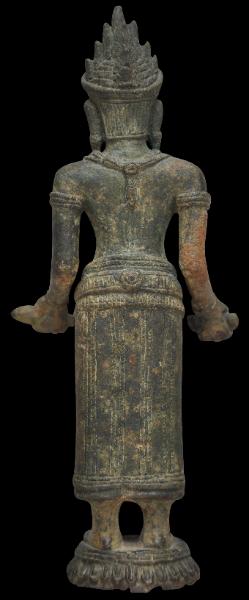

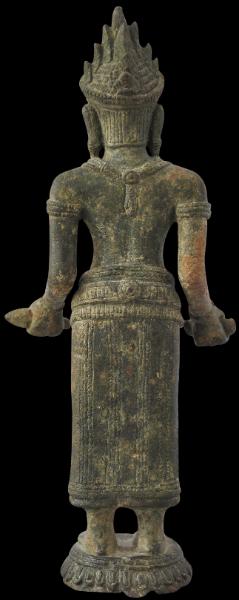
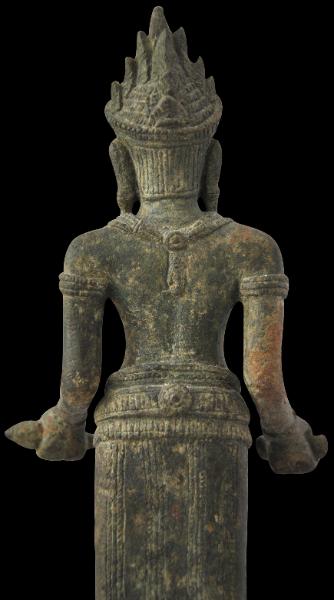

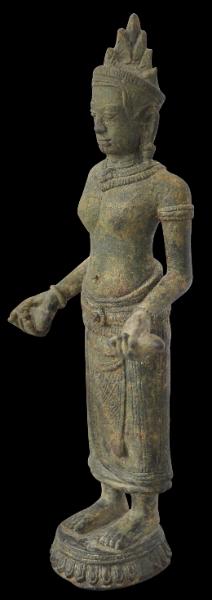
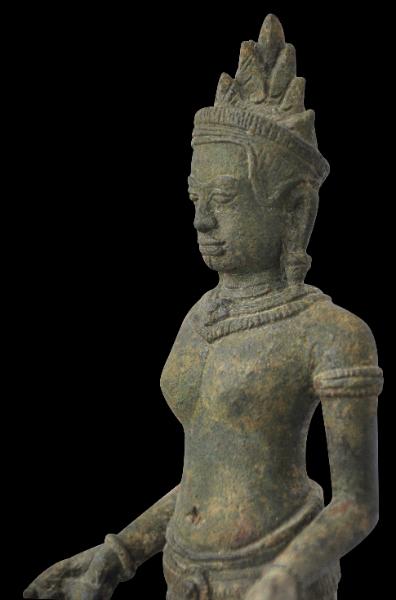
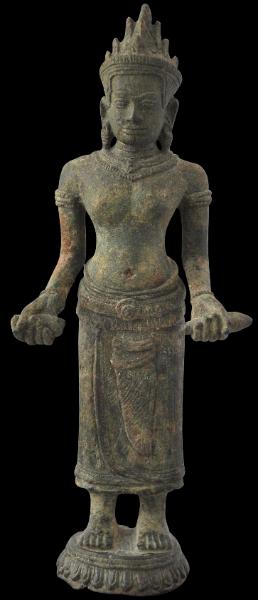
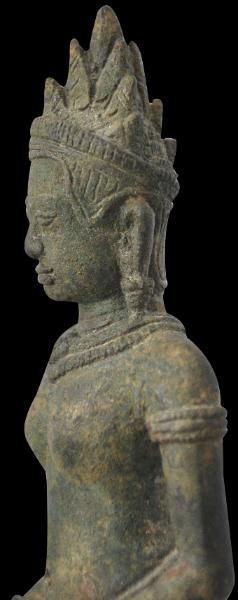
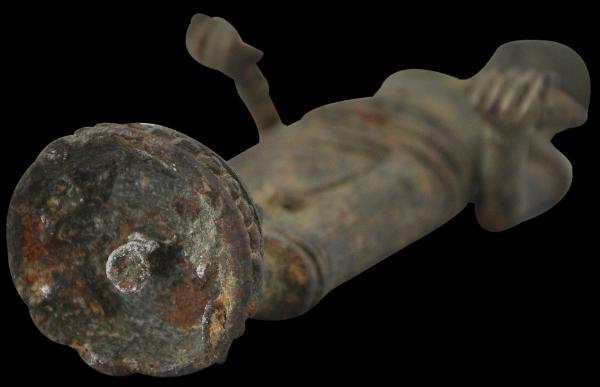
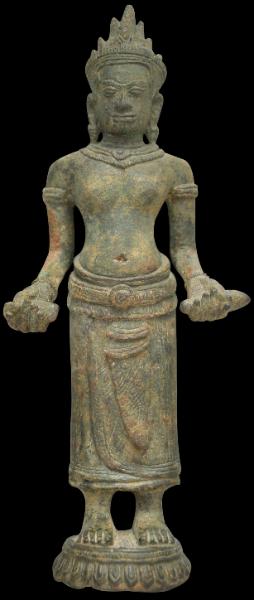
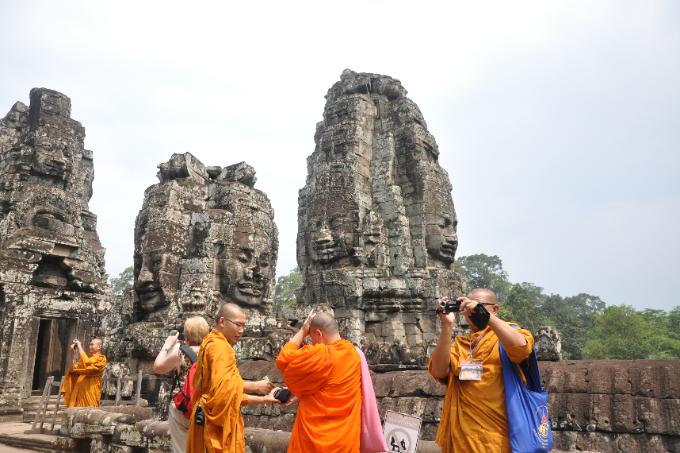
The Bayon Temple complex today.
(Photographed April 2011.)
